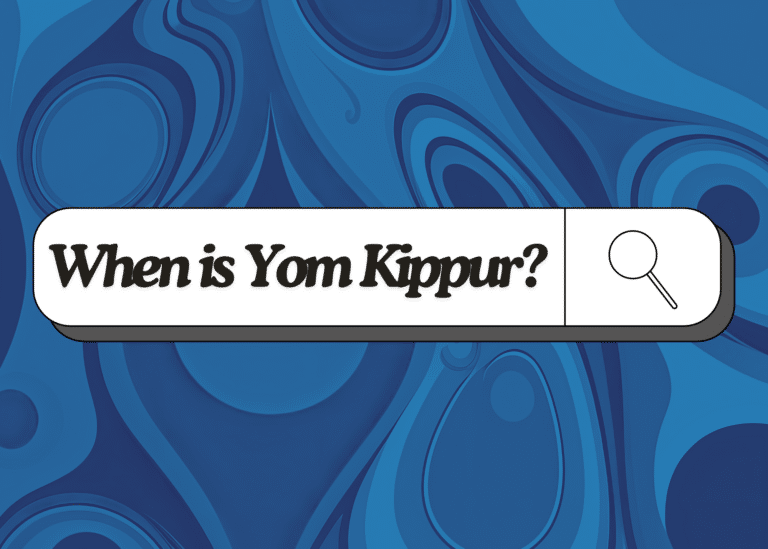
Wondering when is Yom Kippur 2024? Scratching your head about what it is? Here’s a rundown of everything you need to know about Yom Kippur, the Jewish Day of Atonement, and how to celebrate it.
When is Yom Kippur 2024?
Yom Kippur is observed on the 10th day of the Hebrew month of Tishrei. It begins the evening of Friday, Oct. 11, 2024, until the evening of Saturday, Oct. 12, 2024.
What is Yom Kippur?
Yom Kippur means “Day of Atonement.” It is the holiest and most solemn day of the Jewish year and is a fast day. According to tradition, at the end of the holiday, God “seals” our fates for the coming year (i.e., whether we will be inscribed in the Book of Life). The main themes of this day are sin, repentance (teshuvah) and atonement.
Most Jews fast on Yom Kippur for 25 hours. They spend that time repenting for their sins.
In the 10 days between Rosh Hashanah and Yom Kippur, Jewish people are expected to apologize to those they have wronged throughout the year and ask for forgiveness.
For more information on Yom Kippur, check out Unpacked’s holiday guide to answer all your questions.
What do you eat to break fast?
Looking for ideas on how to break your fast? Check out eight options of classic Yom Kippur food to serve.
What are common practices?
Leather-free shoes: Most communities uphold the custom of not wearing leather shoes on Yom Kippur. Leather shoes were historically considered luxury apparel. So, keeping with the humble spirit of the holiday, Jewish tradition recommends avoiding leather shoes to demonstrate a willingness to forego luxury. In order to avoid leather footwear, many wear canvas sneakers, flip flops, Crocs, or wedge sandals.
White clothes: In many communities around the world, it is traditional to dress in white on Yom Kippur. This symbolizes purity and the opportunity to begin the new year with a clean slate.
Breaking the fast: “Break fast” (no, not breakfast) is the meal eaten immediately after the holiday ends to break the fast. In many Ashkenazi American homes, it’s common to serve bagels, cream cheese, kugel, fresh fruit and coffee. In Sephardic homes, the menu might include dairy foods, soups and stews, and other dishes that would be served at a lunch or dinner as opposed to brunch. However, each family has their own break fast customs.
Lighting a memorial candle: If one’s parent or parents are deceased, a special memorial candle, often called a Yahrzeit candle or “ner neshama” in Hebrew, is lit prior to beginning the fast in their memory and burns for the entire holiday.
Tashlich: Tashlich is a ceremony in which Jews throw pieces of bread into a body of water to symbolize casting away their sins. Before performing Tashlich, it is customary to reflect on the past year as part of the Teshuvah process, in order to “cast away” your wrongdoings.
